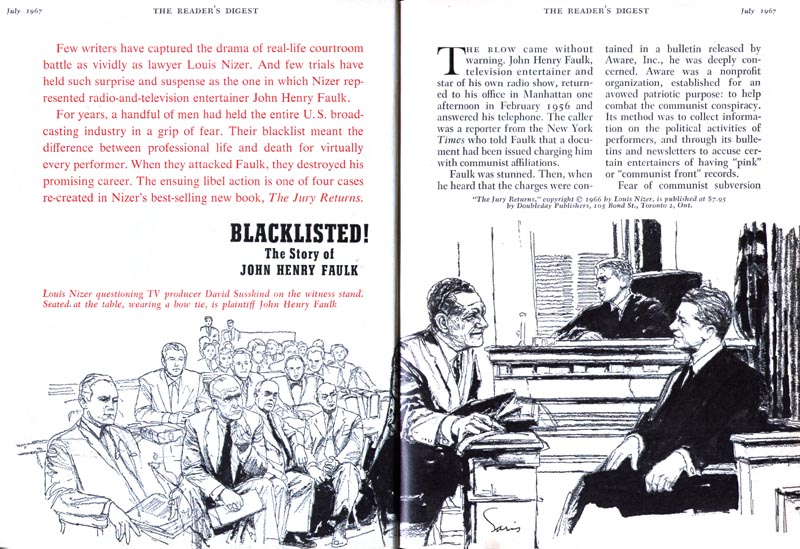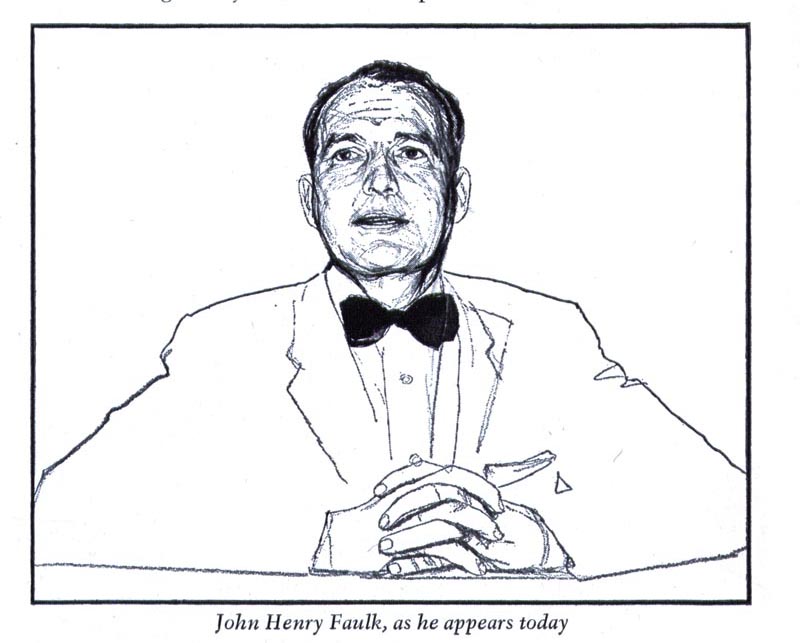Which brings us to Anthony Saris.

Last week we looked at Fletcher Martin and learned that he had some deeply held beliefs about how one should make pictures. Martin hardly fit the mold of "illustrator", but during his career he did a lot of commercial art for both editorial and advertising clients. Similarly Anthony Saris (who was a younger man but worked during the same mid-century period) drew mostly for commercial clients, but abhorred the term "commercial artist". Saris believed there was no distinction between what he called "applied art" and gallery painting. Like Martin, he believed the artist should have unrestricted creative freedom to devise as original and imaginative a solution to his assignment as possible.
Fletcher Martin didn't really plan his pictures in advance - he let them evolve on the canvas. "When I approach the painting," Martin explained, "I never begin with a fixed idea of how the painting will look. I find the painting while doing it."
Similarly, Anthony Saris would begin a picture without what he described as "the common practice of making small pencil layouts to try out the composition. With a fresh paper before me," he said, "I begin drawing, in ink, that which I have decided is to be the principle feature of the design."
Saris would then add surrounding elements until he was satisfied with the results. He would often discard a picture part way through if it began to show signs of an unsatisfactory conclusion. "In my mental background," said Saris, "I retain an image of the shape I must fill, and the illustration gradually approximates it, though the size of the drawing develops as it will, depending on whether I decide the design is complete. The finished drawing may turn out to be from two to four times the size of the reproduction-to-be."

Isn't it remarkable that two artist with such similar philosophies would produce such dramatically different results. That's because in one area these two had opposing points of view: Martin saw no merit in using photo reference for his work. "If you can draw it on the spot you can draw it later," was how he put it. "The tyranny of the model, " said Fletcher Martin, "is a terrible thing."
Anthony Saris, meanwhile, was adamant about the value of his photo reference: "I do not believe in drawing figures from memory," he said, "for thus I would miss those many subtleties and unique arrangements that often present themselves in actuality but which can never be imagined."
This, my friends, is the beautiful contradiction of art. Its why everything I tell you is the truth...

... and everything I tell you is a lie.
* My Anthony Saris Flickr set.
It's hard to imagine an art director letting an illustrator complete the job without direction or approval of roughs. I guess Fletcher Martin was a proven talent before he started commercial work.
ReplyDeleteGerry;
ReplyDeleteFletcher Martin actually did present roughs of a sort. He said he would take on an assignment in the vaguest sense, that is, without being art directed with a layout... more like, "we want to do something about San Francisco Bay". He would then go on location and do drawings... sometimes as many as 200 (!) and not always "on topic" - present them to the client, allow them to choose one to be taken to finished painting, then go off and paint it.
What's more amazing is Anthony Saris similarly getting an assignment and being allowed to do whatever he pleased without showing a rough... as he says, he never did any roughs - he went straight to ink at full size on his illustration board - and just began with the central theme or subject, then looked at whatever remaining space was left, with a vague sense of the shape he was going to have to fill, and then added supporting elements. Using that process, it would be impossible for the AD to see anything preliminary! I was absolutely astonished to discover Saris worked that way, and that ADs allowed it. Its absolutely unprecedented.
I was once told by a teacher "everything I say is true until it's not." I think artists enjoy being duplicitous.
ReplyDeleteMost directors I've worked with prefer not to see prelims, but might want to see states of progress. I consider that a vote of confidence and some people aren't "hands on" types.
For my own work I'm not big on thumbnails, but sometimes do studies of specific elements, or a painting might come from a sketch. I always want to know where I'm going before I leave, but still manage to make a few changes along the way. I also share Saris' appreciation of reference material when accuracy is important.
Always interesting comments here, and a great blog. -Thanks
ReplyDelete